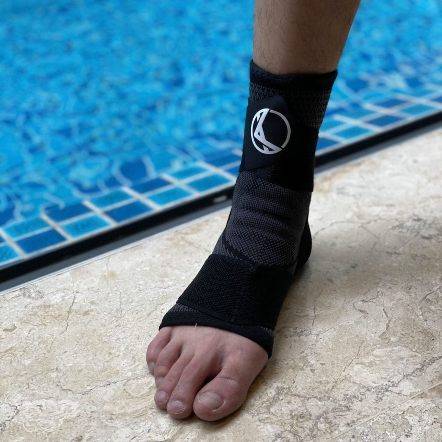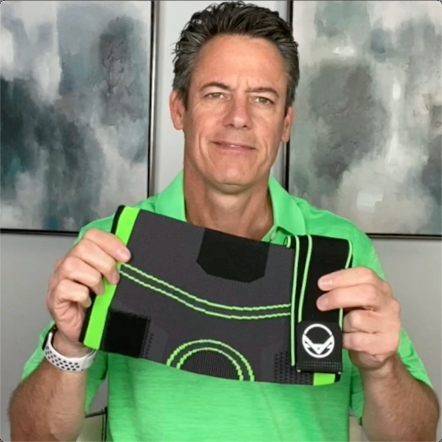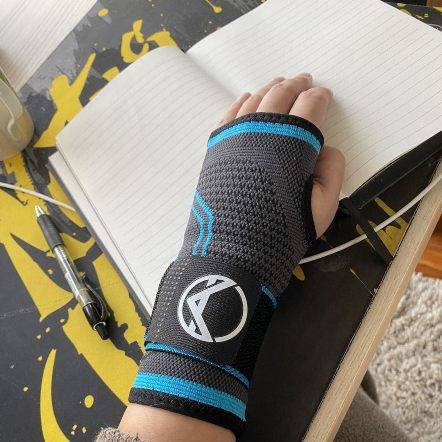
Compression Socks for Neuropathy
JUL 31,2023 | 3 Mins Read
TABLE OF CONTENTS
1. What is Neuropathy and What Causes It?
2. Are Compression Socks Good For Neuropathy?
3. What Other Conditions Do Compression Socks Help With?
4. The Best Compression Level For Neuropathy
5. How Can I Improve the Circulation in my Feet with Neuropathy?
6. Choosing the Best Neuropathy Socks
7. Why Koprez Is The Best Compression Socks for Peripheral Neuropathy?
Certain studies have shown that compression socks can reduce the intensity of neuropathy symptoms and improve overall blood circulation. Compression socks work by providing gentle pressure on the calves, ankles, and feet. In this article, we’ll explore how compression socks can help with neuropathy and discuss the benefits of wearing them.
Neuropathy, specifically peripheral neuropathy, refers to a condition characterized by weakness, numbness, and pain resulting from nerve damage outside the brain and spinal cord. While diabetic neuropathy is primarily responsible for nerve damage in the legs and feet, it's important to note that neuropathy can be caused by factors other than diabetes.
Although approximately 60-70% of diabetics experience some form of nervous system damage, various other causes can lead to neuropathy as well. Trauma, such as from a car accident, repetitive stress, autoimmune diseases, and more, can all contribute to the development of neuropathy.
Peripheral neuropathy is not just a discomforting condition; it can also give rise to serious complications. Diabetic foot ulcers, gangrene, and cardiovascular autonomic neuropathy (CAN) are some of the potential risks associated with neuropathy. Statistics also show that around 8 percent of adults over the age of 55 suffer from neuropathy, with a significantly higher prevalence among those with diabetes.
The signs and symptoms of neuropathy can vary depending on the specific type, but common ones include pain, tingling, burning sensation, numbness in hands and feet, muscle weakness, loss of reflexes, constipation or diarrhea, slowed digestion or absorption of nutrients from food, and decreased sensitivity to temperature changes. Other issues that can arise due to neuropathy include an inability to regulate body temperature, muscle coordination problems, and even impaired balance.

Compression therapy has been found to be beneficial for individuals with neuropathy, and there is evidence supporting its use as a treatment option. Here are some key benefits of wearing compression socks:
For individuals with mild to moderate neuropathy symptoms, a compression level of 15-20 mmHg is often sufficient. This range provides gentle pressure to promote blood flow and alleviate symptoms like pain, tingling, and numbness. The mild compression is generally well-tolerated and can be worn comfortably throughout the day.
However, in some cases, a higher compression level may be necessary. Individuals with conditions like varicose veins or venous insufficiency, which can coexist with neuropathy, might benefit from 20-30 mmHg compression socks. This firmer compression level aids in improving blood circulation, reducing edema, and preventing complications associated with these conditions.
Read this guide to learn how tight should compression socks fit.

References
Author

Claire Evans worked as the content marketing manager at Koprez. Claire combined a background of writing and editing, marketing, and patient education to best serve consumers, fitness enthusiasts, athletes, and anyone who relies on the Koprez brand for helpful information.
Koprez® Featured Products


"I sprain my wrist super often, so I decided to try out this sleeve. This is game-changing! I've been using it for a while now, and my wrists feel amazing. I haven't gotten in any injuries since using it too. It just makes my wrists feel so supported."
Alexis A.


"Use this for my boxing training. It is a very comfortable brace and does not move out of position during skipping ropes and sparring sessions. I use it while running too. Probably the best brace I've purchased throughout the years. It is very flexible. Makes me look like a pro! :)"
Samuel L.


"I've just got back to running after a couple of years of being plagued by injury. These compressions socks are helping give me peace of mind while I build up my distance again. They are the perfect level of compression, super comfy, and very high quality. Feel great while on a run, and looks great in the orange colour I have!"
Dave R.


"I have a weak ankle, and the Koprez ankle sleeve has been a lifesaver. Wear it every day. Super breathable and comfortable. Like wearing a cool sporty looking sock!"
James F.


"This is the best knee sleeve I've ever tried. It's now a must-have for all my exercises. A few years ago, I had an accident that damaged my knees, but with Koprez I can be active again with no knee pains at all. It's been truly amazing!"
Alex M.


"One of the best purchases I've ever made. It fits your legs all the way from top to bottom, great snug fit, gives you support and definitely helps during rehab and training."
Rafael A.


"I had a minor elbow injury, and Koprez sleeve was super supportive and definitely helped me recover faster. I still use the sleeve to prevent further injury. So far, so good. Very comfortable and does not feel hot at all. Highly recommend!"
Corey B.


"It's really been a game-changer for me. It allows me to exercise a lot longer than I used to. Now my knees don't hurt, and they're not uncomfortable at all."
Mike P.


"Great product!!"
Harold


"I have carpal tunnel, and this brace has helped me work pain-free. Love the materials, and I can feel my wrists slowly getting better, even when I don't wear them!"
Christopher J.


"I wanted to try out these sleeves to improve my squats and deadlift in the gym without worrying about injuring my knees. They stayed up throughout the entire gym session, and my knees feel super supported. Now I can do what I love for years to come. "
Corbin C.